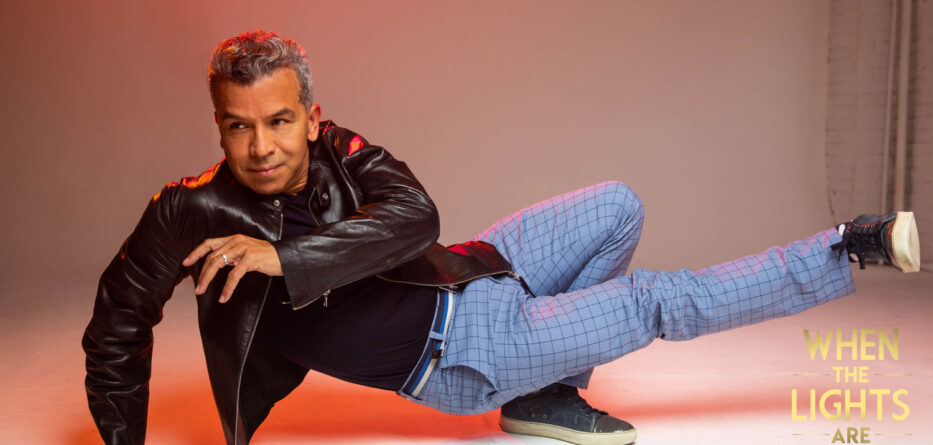Arturo Hilario
El Observador
The Temptations are the iconic vocal group which began their eclectic career in 1960s Detroit, and there’s a good chance you’ve heard of them through their top hits which include “My Girl”, “Just My Imagination”, and “Papa Was A Rollin’ Stone”. To this day the Rock And Roll Hall of Fame inductees are one of most beloved of Motown Record’s roster of artists, who paved the way for music with their constantly evolving sounds, creating some of the most memorable songs in American music history.
Ain’t Too Proud: The Life and Times of The Temptations is the musical adaptation of the group’s lives and career which premiered in 2017 at Berkeley Reparatory Theater to acclaimed reviews, from there the show had runs in Washington D.C., Los Angeles, Toronto and Broadway in New York City.
The first touring production kicked off this year, and will land in San Jose to entertain audiences at The Center for the Performing Arts from October 31-November 5, 2023.
The show is a collaboration from a number of prestigious names in theater, and one key person involved in its creation was Sergio Trujillo, the Colombian/Canadian choreographer who provided the Tony Award winning sequences for the show. Trujillo is a multi-faceted creator with experience in dancing, choreography and directing. Being most known for his choreography, he has worked on shows such as Jersey Boys, On Your Feet and Summer: The Donna Summer Musical.
Recently we had a chance to interview Trujillo about his career and work on Ain’t Too Proud, what his Tony Award meant for him, and why he’s an advocate for getting more Latinos involved in the world of theater.
For more information on tickets and showtimes, visit broadwaysanjose.com.
How did you end up on the path of performing arts and what in your life inspired you to get on that path and manifest it into the career you have now?
I grew up in Colombia, immigrated from Colombia to Canada, mid 70s with my family. Being the son of an immigrant comes with certain sort of responsibilities. So most of my young adulthood, I spent doing academics. I went to University of Toronto, studied biochemistry. Then I went to chiropractic school.
But what I really wanted to do that entire time was be a dancer. I started dancing late in my career at the age of 18, 19, while I was in university and doing my academic studies, I sort of studied passionately. I studied dance passionately. So whenever I wasn’t studying for school, I’d be in a dance class or I’d be stretching or I’d be practicing. But I knew that it was important for me to find a sort of safe career, one in which I can help provide and help my family. But what I really wanted to do was dance.
And so I decided, while I was in my second year of chiropractic school, to take a sabbatical and really give dance a shot. So I decided that if I was going to do it, I needed to do it where the best were at, so I decided to come to New York.
And it was during that time, during that sabbatical, that I auditioned for Jerome Robbins’ Broadway, and I got the show, I was hired. It was my first Broadway show and that moment changed my life forever. I knew that if it wasn’t meant to be, that life would point me in the right direction. But I’ve had great opportunities throughout the course of my career as a dancer, as a young dancer, as a choreographer, and now as a director.
How did being a performer on stage and getting that experience beforehand help in transitioning to doing choreography and directing?
I think ultimately, if you really look at the masters that have come before me, like Bob Fosse or Jerome Robbins or Michael Bennett, they all were dancers. And so I think that what it does, once I knew that I was going to choreograph, I always knew I was going to choreograph when I was a little kid, but it really informs you, it empowers you.
Having the ability to be able to express my body, my ideas, through movement is incredibly helpful in the room, it just becomes an easier approach to the work because you can express it. Obviously, I’ve also been very lucky to have worked on the Jerome Robbins’ Broadway or done all of Bob Fosse’s work because my last show was Fosse the musical, that was the last show I danced in.
It’s not really about winning the Tony Award, it’s what you do with the opportunity, what do you do with that platform? Because the award will sit on a mantle at home, but it’s how you activate the opportunity and maximize it.
-Sergio Trujillo
Having done those shows and having worked again with great master director choreographers allowed me to experience, study and really get a sort of master’s in direction and choreography by studying the work and being part of the work and dancing the work.
With Ain’t Too Proud, how did you get involved with the show and what was your initial reaction on coming on board and being able to help tell the story of The Temptations?
So I was approached and offered the job by my close collaborator and mentor, Des McAnuff, we had worked together on Jersey Boys prior to that and a few other productions. Actually, Ain’t Too Proud was like our 6th or 7th production together.
You know, I was incredibly excited about the opportunity of getting to choreograph that catalog of music, but it sort of came with a lot of pressure. They are one of the most iconic groups in R&B in music history, but they also are known for their moves. And so for me, it was slightly nerve wracking to think that I was going to try to figure out how to carry the torch and reimagine them in a way that could be successful and new and accessible to a younger audience specifically. But more than anything, I was thrilled and excited about getting the chance of really exploring all the possibilities with that catalog of music and obviously the inspiration that is The Temptations.
What has working on the choreography for other musicals such as Jersey Boys, On Your Feet and Summer: The Donna Summer Musical taught you about what makes a showstopping or effective choreography?
I think with each one of those shows, what I’ve done, my point of view, my choices have been about understanding the artists, but never really creating my own version of it, so that I’m not replicating them, but I’m using their music as a source of inspiration because, truthfully, that work precedes me and has been choreographed by somebody else. So I wouldn’t want to have ownership or pretend to have ownership of any other choreography because it doesn’t belong to me.
So my point of view has been, “if I were the choreographer for that group at that time, what would I do?” I’ve done it with Jersey Boys, I’ve done it with the Gloria Estefan show with Donna Summer’s and now with Ain’t Too Proud. And so each time it becomes about how would I interpret this movement? Also the one thing that you have to take into account is that you sort of have to make it accessible to everybody, not just the people that grew up on The Temptations. Because my goal with interpreting was really to create vocabulary that felt fresh, new, that a young person can come in and say, “wow, those are really cool moves, I want to know how to do that.”
Really just looking at choreography and dance through the lens of today – dance has evolved, has changed. And so the work and the work that I’ve done in Ain’t Too Proud reflects all of that.
After the culmination of all the work you’ve done so far, how did it feel winning the Tony Award for Best Choreography? And on top of that, being the first ever Latinx recipient of a Tony Award for Best Choreography.
It was really a dream come true. You kind of dream about it, but you never really think that maybe it’s never going to happen or it’s not going to happen, but you just always keep doing the work.
I think what it did though, it did really solidify the mission that I was on, on course even before I won that show, the award was for me to be able to really take the moment, take the platform and find ways in which I can empower the Latine community. And so because before that and from that moment on, I’ve been working on finding different stories that are specifically about our community that can actually inspire audiences and gathering a group of landing artists, composers, lyricists, authors, designers to tell these stories.
And so that’s what that moment was. It’s not really about winning the Tony Award, it’s what you do with the opportunity, what do you do with that platform? Because the award will sit on a mantle at home, but it’s how you activate the opportunity and maximize it.
Can you touch on how the opportunities or growth for Latinos in the arts has become more mainstream and what you think of that as you try to expose the world of theater to more diverse people?
Well, I’ve been at it for 35 years almost, and I’ve seen the growth in many ways in different realms. So in terms of the performing arts, i.e. actors, choreographer, dancers, singers, I’ve seen the growth that has been made and some of that is allowing brown people to have the opportunity, Latine people to have the opportunity to step up to bat.
That’s why I’m out here creating work that can actually give those people, people that never get an opportunity to step up to bat, to be seen, to be heard and to tell their stories. And what it does is in some degree, there are areas where we still have a lot of work to do and we can’t ask someone to all of a sudden write the book of a show if they haven’t had enough experience to write the book of a show.
So some of the work is figuring out how to mentor them and this happens across the boards, whether it’s a composer, lyricist or a set designer or lighting designer. But these are all aspiring artists that are Latine, so providing them with the opportunities to be able to learn and grow.
So I’ve seen in the last 35 years, there’s been some growth, but I still feel like there is more work to be done. And that requires being able to create opportunities for them to be able to hone in on the craft, whichever part of musicals you want to do, whatever it is.
And what advice would you give to those that want to work in performing arts and those wanting to be in that world?
You know, I think I want to make sure that the Latine audiences, whoever is reading this article, that they understand that there is a career in the arts, that musicals and theater was made, was created for everybody. That is not a high art form, that is not for the upper class, that is not for the upper middle class, it is made for everyone.
And that’s why I’m also creating work that speaks to them, because I want them to know that they belong in the theater. So don’t ever shy away from it. Don’t ever think that there isn’t opportunities, that there isn’t a life, there isn’t a career that could be made in the arts. There are so many varieties of things, roles they can play in the theater. You can be a costume designer, you can be a wig designer, you can be a lighting designer, makeup designer, dancer, choreographer, lyricist, stage manager. There’s just so many opportunities, be in the tech crew, build, design, and the opportunities are huge.
What do you hope that the audiences take away from the experience of Ain’t Too Proud?
Well, look, we are revisiting one of the most important musical groups in the history of music in America. And The Temptations represent that. And I hope that they are inspired by their story, that they are moved by the story, but that they also embrace the music and that it leaves them with joy and the desire to want to dance and get up and dance for those two and a half hours just to take our audience on a joyful ride.






